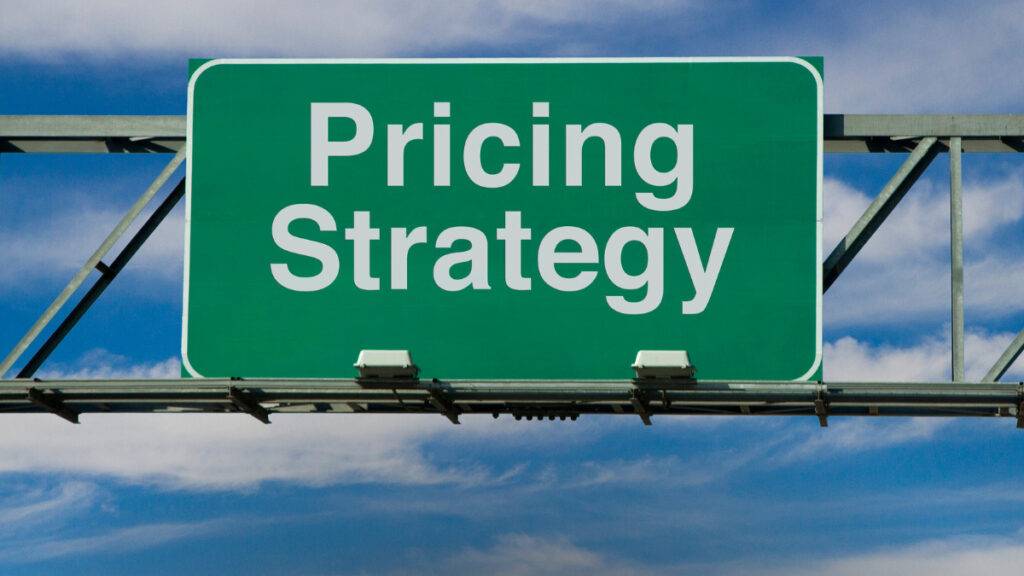In this article, we will show you why and how you should adopt tiered pricing in your business. The following information will be of great value to your company. Ready?
What is Tiered Pricing?
It means offering your product or service with plans that have different values. As much as we do not realize, this type of pricing is already quite present in our day-to-day.
When an e-commerce company offers deliveries ranging from 3 to 7 days, at different prices, it is adopting this practice. The same goes for gyms where you pay different amounts if you want to train only 3 days a week or if you prefer to have a free pass with unlimited access.
Why adopt Tiered Pricing?
In the case of software and subscription services, pricing according to tiers has also been increasingly common because of the advantages offered.
Therefore, the practice of Tiered Pricing is one of the great trends when it comes to pricing strategy, especially for the software as a service model (SaaS), although it can be applied successfully in several other industry segments.
Here are 7 benefits of using segmented pricing:
1. You make more money
People invest money to the limit where they are willing to pay. If a customer has a purchasing power of R$100 and your product costs R$10, why would you leave the other R$90 on the table? Displaying different price tiers is an advantage in these situations.
You get more customers
Lower priced options are useful for attracting new customers who, over time, have a chance to buy higher ticket solutions. The entry barrier is smaller and you can earn their trust with quality service.
3. You expand your audience
By offering products of different price ranges, such as R$10, R$100 and R$1,000, you have the chance to communicate with a larger number of potential customers. They can have financial profiles that vary and they can reach you through different communication channels.
4. You generate more results with less effort
It is easier to create a single product with several price offers than to create a completely different series of products. With a little more marketing effort, you reduce the time spent on production and development.
5. You give options to the public (and they love it)
Power of choice is important to us humans. When you offer only one option to your customers, they compare you to your competitors (after all, consumers compare prices all the time). On the other hand, when you offer variations, price comparisons happen inside your store or website.
6. You create a greater perception of value
People (including all entrepreneurs) want to make sure they are taking as much value as possible for the price paid. When you allow them to choose the product or service themselves, you create a sense of value maximization.
7. You deliver bespoke solutions
Different prices are closely associated with different customer profiles. Basic users may have no reason to buy a complete package of services. On the other hand, advanced users will not settle for the simpler version. Through targeted pricing, you appeal to everyone and deliver bespoke solutions with a single product – as long as you use variations.
As we have seen, pricing a software, service or product according to segments can be extremely valuable to your company’s business. But you must be wondering: how exactly can I apply this strategy in practice?
Here are the key things you need to know to work with this strategy in your business:
– Begin by setting your value metric
Contrary to what it may initially seem, segmented pricing goes far beyond simply setting different price levels for a product. There are many effective ways to segment a product and the tiered prices are a consequence of the various approaches.
A variety of value metrics can serve as a basis for defining the plans. You can be creative and generate an unlimited number of value metrics for your product or service, but it is important to remember that when it comes to pricing, the customer must have the perception that the extra value is worth the cost.
Here are four ways to get you started –
- The number of users: Smaller companies, with small teams, become customers because they have an entry option which they can afford. Large companies feel served by different options in the larger plans.
Example 1: In ContaAzul, financial management software plans are based on the number of people using.
Example 2: A variation of this practice is used by Netflix based on concurrent users.
b. Usage time: Some of your customers may need the product or service for a short period of time while others may have a continued long-term need. Offering simpler short-term plans along with plans that reward the loyalty of customers who are willing to stay longer are both equally profitable for your company.
Example: Adobe Creative Cloud’s Individual Application plan offers the option to pay per month or per year. A freelance designer may opt for the annual plan, but someone who needs the software for a one-off need has an option of getting the monthly license.
c. Storage Space (bytes): When the product or service is linked to the use of data stored on disk or cloud, one of the simplest metrics to explain and help the customers decide the best plan is the use of storage space.
Example: Apple’s file storage service, iCloud, has different plans for available space serving both, individuals as well as larger companies.
d. Success Metrics: The more the customer succeeds with the use of a product or service, the greater their need for the advanced plans. This criterion helps a lot in the practice of upselling, which is selling a more advanced plan to a current customer.
Example: RD Station plans, which is a digital marketing software, changes according to the features used, but also according to the number of leads generated. The more leads the customer generates using the product, the greater will be their need for a more complete plan.
– Keep people focused
The examples of value metrics are quite diverse, but all of them certainly must take into account one very important aspect: the differences in people.
This means that the focus of the differentiated plans should not only be based on the operational cost for the company but on the actual needs of each potential client. This will give you targeted deals that help raise the renewal rate.
In the example of Adobe Creative Cloud, you can clearly identify two people:
The freelancer professional who makes recurring use of software as it depends on it to provide their services.
The designer who accepted a short-term project, for which he will need the software, but only for a short time.
Both have different needs and, therefore, different purchase days.
– Build Your Goals
In order for Tiered Pricing to work, it is essential to have a well-prepared plan for serving different customers, in different stages, such that every customer obtains the desired success with the product or service. When that happens, it is only natural that a portion of these clients start to thrive to the point of needing more advanced plans.
It is normal that the most basic plan is not the most profitable, proportionately, compared to the more advanced plans. Therefore it is important to build sales goals defined by the following:
1. The plan that will represent the largest share of the Monthly Recurring Revenue (MRR)
2. The volume of potential upsell (“packet increase”) for each plan
With these goals, it is possible to focus the efforts of Sales Representatives on the right areas and ensure greater profitability for the company.
– Define value offerings and put them into practice
Now that the strategy is well defined, it is time to define the value of each plan. At this stage, in addition to the value metric, companies also make a division of features per plan. In the examples of ContaAzul and RD Station, it is not just the number of users or leads that define each tier, but also the features that are available according to the contracted plan. This is a decision that should be focused on the people who will use the product or service.
In practice, it is crucial to monitor the acceptance of each plan and make the necessary adjustments. Sales is the best indicator in these cases: whether it is talking to representatives or measuring the progress of customers through the buying process. Is there something that is causing concern or blocking the process? Investigate the cause and remove these difficulties. Often, few adjustments in packages and values can result in a considerable increase in sales!
Ready to apply Tiered Pricing?
With the practices listed above, you can already begin to chart your strategy to price your product or service.
Remember that an important point is to maintain simplicity: the customer must understand the options (and the added value of each tier) quickly, without the need for detailed explanations. This also benefits your business in terms of structure.
Giving interesting names to the different packages offered help in customer decision making and creates even greater value perception.
We hope that this content has been useful and will give you the opportunity to generate better results for your company!
Before we say goodbye, an invitation: sign up for our e-mail in our newsletter to receive more tips like this. We’ll send you updates and let you know when useful content is available to you! Do not miss it!
Learn more about sales pipeline by clicking here.





